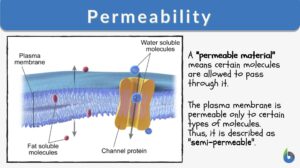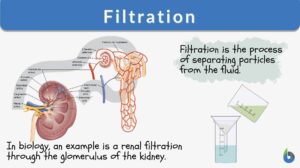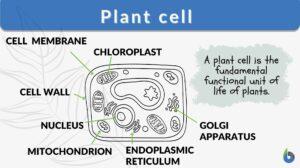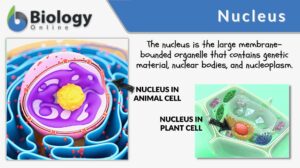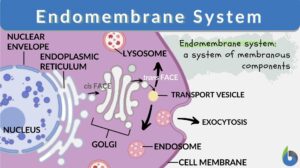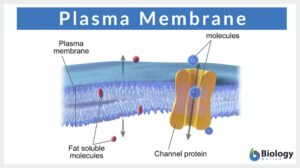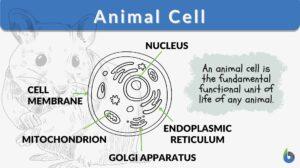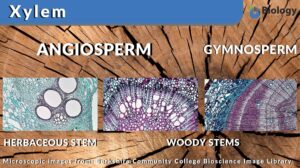Search Results for: pores
Permeability
Permeability Definition What is permeability? In earth science, its definition is this: "the ability of any material such... Read More
Nuclear pore
Definition noun plural: nuclear pores ˈnu kli ər, pɔː Any of the many perforations on the nucleus as a result of the... Read More
Nuclear pore complex
Definition noun plural: nuclear pore complexes ˈnu kli ər, pɔː ˈkɒmplɛks A complex of nucleoporins resulting in the... Read More
Plant Cells vs. Animal Cells
Plant Cells Most cells are not visible with the naked eye. However, with microscopes of various types, plant cells can be... Read More
Nuclear envelope
Definition noun plural: nuclear envelopes nu·cle·ar en·ve·lope, ˈn(j)ukliɚ ˈɛn.və.ləʊp The two layered membrane... Read More
Millepora alcicornis
Millepora alcicornis is a species of the family Milleporidae, class Hydrozoa, phylum Cnidaria. It is a colonial fire coral... Read More
Cell Structure
The interior of human cells is divided into the nucleus and the cytoplasm. The nucleus is a spherical or oval-shaped... Read More
Filtration
Filtration Definition What is filtration? Filtration is separating a solid from a fluid through a porous material that... Read More
Electroporation
Definition noun, plural: electroporations A non-chemical method that transfers the genetic material into the recipient cell... Read More
Plant cell
Plant Cell Definition A plant cell refers to any cell of a plant. It is the structural and functional unit of plants. Plant... Read More
Nucleoporin
Definition noun plural: nucleoporins Any of the family of porins that make up the nuclear pore complex Details Overview... Read More
Endomembrane system
Ever wondered how biomolecules are made within the cell and then they are released outside the cell for use by the body?... Read More
Sonoporation
Definition noun A mechanical method of delivering molecules into the cell using sound, e.g. ultrasonic... Read More
Plasma membrane
Do all cells have a plasma (or cell) membrane? Yes, all cells have a biological membrane that separates the protoplasm from... Read More
Plant Tissues
Plants are composed of three major organ groups: roots, stems, and leaves. As we know from other areas of biology, these... Read More
Animal cell
An animal cell is the fundamental functional unit of life of animals. It is also the basic unit of reproduction. Animal... Read More
Fruits, Flowers, and Seeds
Flowering plants grow in a wide variety of habitats and environments. They can go from germination of a seed to a mature... Read More
Dicotyledon
Definition noun, plural: dicotyledons A group of flowering plants belonging to the class Magnoliopsida of Angiospermae... Read More
Transudation
Definition noun (1) The act, process, or condition of transuding, i.e. the oozing or passing gradually of a liquid possibly... Read More
Respiration
Organization of the Respiratory System Each lung is composed of air sacs called alveoli - the sites of gas exchange with... Read More
Genetic Information and Protein Synthesis
Genetic Code Genes are sequences of DNA nucleotides that carry and transmit the information specifying amino acid sequences... Read More
Water in Plants
The movement of molecules, specifically water and any solutes, is vital to understand in light of plant processes. This will... Read More
Axon terminal
An axon terminal is any of the button-like endings of axons through which axons make synaptic contacts with other nerve... Read More
Tight junction
What are tight junctions? Tight junctions are the intercellular barrier between two neighboring endothelial and epithelial... Read More
Sieve-tube element
Definition noun, plural: sieve tube elements A specialized type of sclerenchyma cell that forms a sieve tube of... Read More
Pneumatophore
Definition noun, plural: pneumatophores (botany) A specialized aerial root, such as in certain mangrove species, that stick... Read More
Liliopsida
Definition noun (plant taxonomy) A taxonomic class of the division Magnoliophyta comprised of lilies, grasses, palms,... Read More
Sieve element
Definition noun (botany) A food-conducting cell in the phloem of vascular plants Supplement The phloem is the vascular... Read More
Sieve tube
Definition noun, plural: sieve tubes (botany) Any of the tubes in the phloem comprised of cells joined end-to-end through... Read More
Nuclear lamina
Definition noun plural: nuclear laminae or nuclear laminas nu·cle·ar lam·i·na, ˈn(j)ukliɚ ˈlæm.ɪ.nə (cell... Read More
Sieve plate
Definition noun, plural: sieve plates The perforated transverse wall between two sieve elements in vascular plants... Read More
